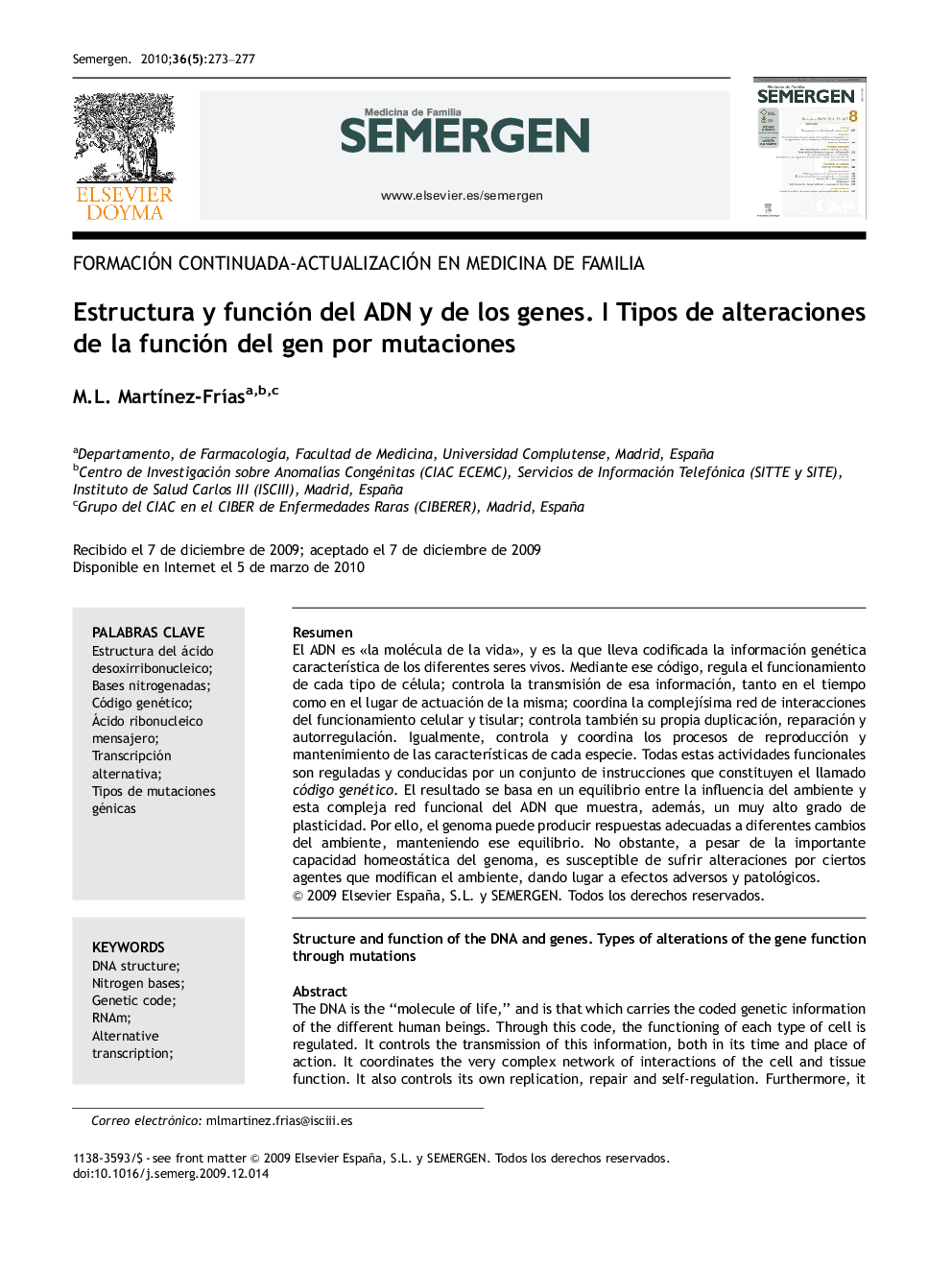| Article ID | Journal | Published Year | Pages | File Type |
|---|---|---|---|---|
| 3835528 | SEMERGEN - Medicina de Familia | 2010 | 5 Pages |
ResumenEl ADN es «la molécula de la vida», y es la que lleva codificada la información genética característica de los diferentes seres vivos. Mediante ese código, regula el funcionamiento de cada tipo de célula; controla la transmisión de esa información, tanto en el tiempo como en el lugar de actuación de la misma; coordina la complejísima red de interacciones del funcionamiento celular y tisular; controla también su propia duplicación, reparación y autorregulación. Igualmente, controla y coordina los procesos de reproducción y mantenimiento de las características de cada especie. Todas estas actividades funcionales son reguladas y conducidas por un conjunto de instrucciones que constituyen el llamado código genético. El resultado se basa en un equilibrio entre la influencia del ambiente y esta compleja red funcional del ADN que muestra, además, un muy alto grado de plasticidad. Por ello, el genoma puede producir respuestas adecuadas a diferentes cambios del ambiente, manteniendo ese equilibrio. No obstante, a pesar de la importante capacidad homeostática del genoma, es susceptible de sufrir alteraciones por ciertos agentes que modifican el ambiente, dando lugar a efectos adversos y patológicos.
The DNA is the “molecule of life,” and is that which carries the coded genetic information of the different human beings. Through this code, the functioning of each type of cell is regulated. It controls the transmission of this information, both in its time and place of action. It coordinates the very complex network of interactions of the cell and tissue function. It also controls its own replication, repair and self-regulation. Furthermore, it controls and coordinates the reproduction and maintenance processes of the characteristics of each species. All these functional activities are regulated and conducted through a combination of instructions that make up the so-called genetic code. The result is based on a balance between environmental influence and this complex functional network of the DNA that also shows a very high plasticity grade. Thus, the genome can produce adequate responses to different environmental changes, maintaining this balance. However, in spite of the important hemostatic capacity of the genome, it can be altered by some agents that modify the environment, giving rise to adverse effects and pathologic conditions.
